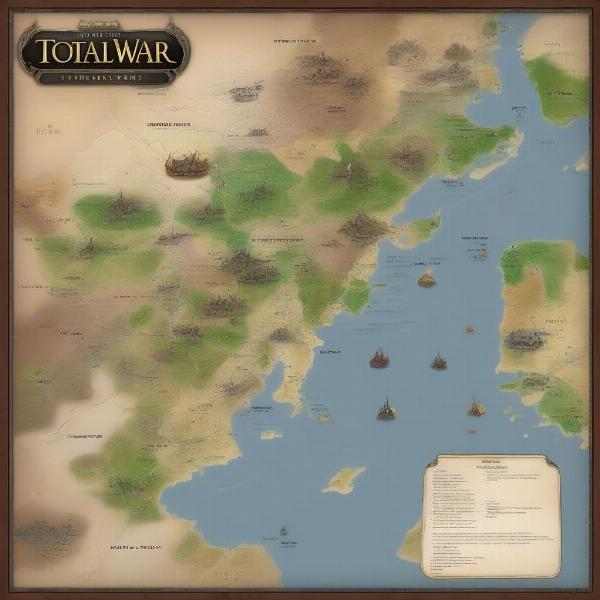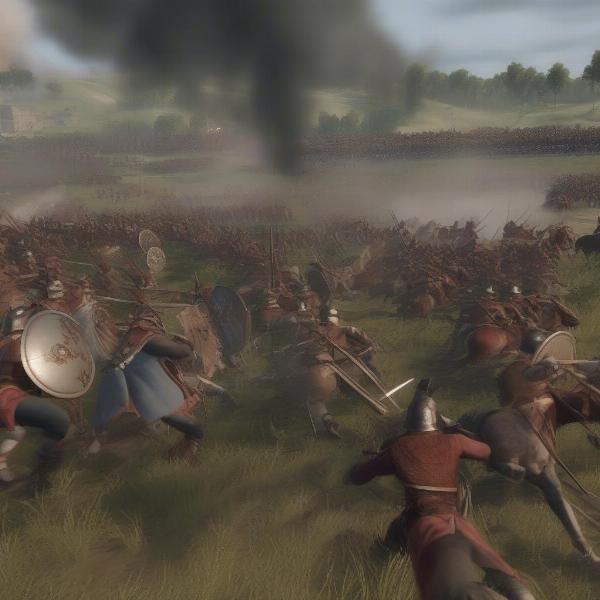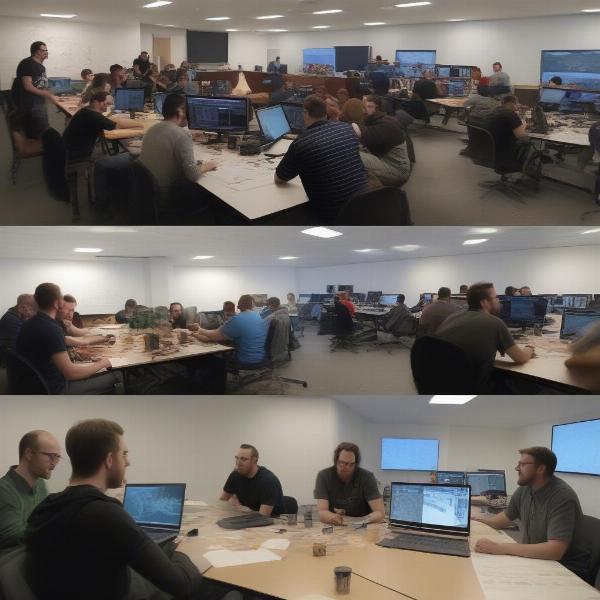Creating a Total War game, a historical grand strategy experience, is no small feat. It requires a deep understanding of history, complex game mechanics, and a passion for delivering a compelling and immersive experience. At SupremeDuelist.blog, we often delve into the intricacies of strategy games, and today we’re exploring what it takes to develop a game that rivals the Total War series.
Here at SupremeDuelist.blog, we’re dedicated to dissecting the core of what makes games tick, and we’ve seen firsthand how the Total War franchise has captivated players with its blend of grand strategy and real-time battles. Our aim today is to equip aspiring game developers with the knowledge needed to begin their own journey, even if it’s just a conceptual one at first. We’ll break down the essential elements, from initial concept to finished product, to help understand what goes into developing a title in this demanding genre.
Understanding the Core Mechanics of a Total War Game
Before diving into the nitty-gritty, it’s crucial to understand what defines a Total War game. It’s a unique blend of two main components: a turn-based strategic campaign map and real-time tactical battles. The campaign map allows players to manage their economy, diplomacy, technology, and military forces. The real-time battles, however, is where the player tactically commands troops in combat against their enemy. These two pillars, when executed seamlessly, create an incredibly immersive and engaging gameplay loop.
Strategic Campaign Map Design
The campaign map is where the player’s grand strategy unfolds. Key aspects to consider include:
- Map Design: The geography should be faithful to the historical or fictional setting.
- Resource Management: How resources are collected, distributed, and utilized.
- Diplomacy System: How factions interact, form alliances, and engage in conflict.
- Technological Progression: How research and development shape the game.
- Character Management: The role of leaders, agents, and heroes within the game.
The campaign map requires a balance between providing enough strategic options to keep players engaged, while not overwhelming them with too many micromanagement tasks. A strong economy, diverse diplomatic interactions, and a meaningful technology tree are essential for a good experience. As a reminder, there are several other strategy games like world war 2 turn based strategy games which can provide inspiration for your own title.
Real-Time Battle System
The real-time battles are where players see their strategic decisions come to life. They demand a balance of unit variety, tactical depth, and visual fidelity. Core components here include:
- Unit Variety: A wide range of units, each with unique strengths and weaknesses.
- Terrain and Formations: How terrain affects combat and the importance of tactical formations.
- Morale and Fatigue: The impact of psychological factors on battlefield performance.
- AI: How the enemy behaves and reacts on the battlefield.
These battles are not just about button-mashing; they require tactical thinking, strategic positioning, and understanding the strengths and weaknesses of one’s army. The AI’s ability to adapt and react to your tactics is key to providing an engaging and challenging experience.
 total-war-campaign-map-design
total-war-campaign-map-design
Key Elements to Consider When Making a Total War Game
Beyond the core mechanics, several other elements need consideration when developing a Total War game. These often involve making the game historically accurate, engaging, and accessible to a broad audience.
Historical Authenticity or Fictional Setting
The setting of your game, whether historical or fictional, significantly shapes the overall experience. The Total War series is known for historically-accurate settings, often focused on particular eras or regions, such as the total war civil war game titles focusing on civil wars. If you opt for a historical approach, you’ll need in-depth research, but a fictional or alternative setting allows more creative liberties. However, both require a coherent and detailed world, and often, the historical basis can add to the draw for certain gamers.
Research and Historical Detail
Regardless of the setting, thorough research is important to give depth to the game. “A good game, like a good story, needs a foundation of detailed research, whether it’s for historical accuracy or to build a believable world,” says Anya Petrova, a history and game design consultant. In historical settings, research will influence the accuracy of units, technologies, and the overall socio-political climate of the era. Even with fictional settings, there should be a defined history that impacts the game’s present state.
User Interface and User Experience (UI/UX)
A clunky UI can ruin an otherwise great game. A clear and intuitive UI is essential, providing easy access to information without overwhelming the player. The UX should be seamless, making both strategic management and real-time battles enjoyable, allowing players to easily control the flow of their campaign. For example, are all the different units in the game easy to tell apart? Is the information easy to process in a glance?
Sound Design and Music
The audio elements play a crucial role in immersing players in the game. Sound effects in battles should be impactful and realistic. “Audio is half the experience,” emphasizes Kenji Tanaka, a sound engineer for several strategy games. “The sound design has to convey the scale of the battles and the emotions of the time.” A fitting musical score can enhance the atmosphere, making players feel like they’re truly leading a nation or empire.
 total-war-battle-combat-troops
total-war-battle-combat-troops
What are the Development Challenges of a Total War Game?
Developing a Total War game is a massive undertaking. Here are a few of the biggest hurdles:
Balancing Complexity with Accessibility
The Total War series is known for its complex mechanics. However, a game can’t only appeal to hardcore fans; it needs to be approachable to a wider audience. “The challenge is to provide enough depth without scaring off new players,” remarks Evelyn Reed, a game designer specializing in player onboarding. Balancing complexity with accessibility is vital for the success of the game. A well-designed tutorial, clear information architecture, and multiple difficulty settings can help bridge this gap.
AI Development for Campaign and Battles
Creating sophisticated AI for both the campaign map and real-time battles is extremely challenging. The AI must make strategic decisions on the campaign map, engaging in diplomacy, managing resources, and planning military campaigns. In battles, the AI needs to be able to employ tactical maneuvers, respond to the player’s actions, and adapt to changing circumstances. Developing robust and believable AI that can provide a challenging but fair game experience is an essential element of success.
Performance Optimization
A Total War game can involve thousands of units on the battlefield, along with detailed terrain, complex physics simulations, and complex AI calculations. Optimizing the game’s performance to run smoothly on a variety of hardware configurations can be very complex. This often involves extensive code optimization, level of detail adjustments, and hardware profiling.
Managing Scope and Resources
Developing a Total War game requires a large team of artists, programmers, designers, and researchers. Managing resources, meeting deadlines, and staying within the budget is a significant challenge. Careful planning and effective project management are critical for a successful game release.
 total-war-game-dev-team-planning
total-war-game-dev-team-planning
Frequently Asked Questions About Making a Total War Game
Here are some common questions aspiring developers ask when thinking about creating a Total War type game.
How long does it take to develop a Total War game?
The development time can range from 2 to 5 years, depending on the scope, team size, and available resources. A project of this magnitude takes a significant amount of planning and production.
What are the essential programming skills needed for this?
You’ll need a deep understanding of C++ (for performance-intensive tasks) and C# (for scripting and game logic), along with knowledge of AI, pathfinding algorithms, and rendering engines. This would be a good use of a dedicated team, as a single developer would find the challenges extremely difficult.
Is there a specific game engine that is recommended?
While some studios use proprietary engines, commonly used engines like Unity or Unreal Engine can be adapted for a Total War style game. Engine selection depends on the project’s requirements and the development team’s experience.
How important is modding support for a Total War game?
Modding support can be a game’s lifeline. It fosters community engagement and allows fans to customize the game according to their preferences. The mod community often provides unique and often popular content, extending the game’s lifespan considerably.
How do I ensure historical accuracy in my game?
Extensive research using primary and secondary sources is crucial, along with consulting with historians. Proper representation of the units, events, and cultures is critical for a sense of accuracy, unless the game’s setting is fictional.
Similar to the intricacies involved in Total War games, other titles also require nuanced game design strategies and can be worth exploring like a war of the ages game.
Conclusion: Embarking on Your Total War Journey
Creating a Total War game is not for the faint of heart. It demands a deep understanding of game design, historical accuracy (or a rich fictional world), and rigorous project management. But, with the right team, resources, and passion, a game can be developed to captivate gamers for years. The blend of grand strategy and real-time battles provides a unique and rewarding experience for both the developer and the player.
The journey of crafting a Total War game is challenging but incredibly fulfilling. At SupremeDuelist.blog, we appreciate the complexity and depth of these games, and we hope this guide has provided you with some valuable insight into the process. Remember to keep exploring, learning, and always strive to create a game that resonates with players, and if your focus changes then check out other games such as the star wars roleplaying game d6. Now it’s your turn to embark on your own epic game development journey! If you found this article interesting or helpful, share it with other game developers!
Leave a Reply